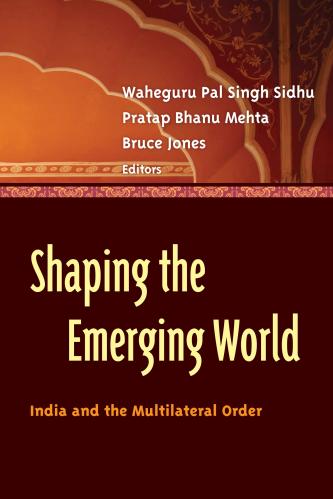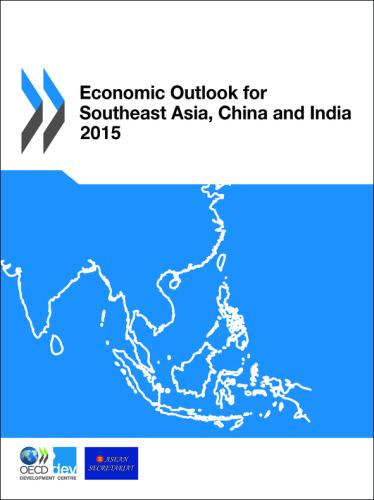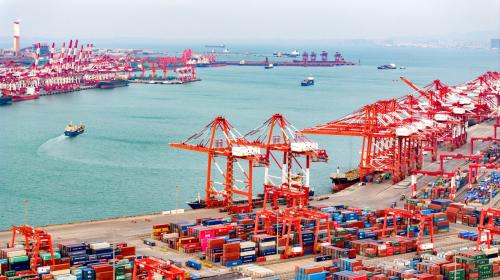Content from the Brookings Institution India Center is now archived. After seven years of an impactful partnership, as of September 11, 2020, Brookings India is now the Centre for Social and Economic Progress, an independent public policy institution based in India.
The last two years have seen a considerable widening of differences between China and India over issues such as the boundary dispute, the Belt and Road Initiative, Indian membership to the Nuclear Suppliers Group, and China’s presence in South Asia and the Indian Ocean region. Amid these developments, Indian Prime Minister Narendra Modi travelled to Wuhan in China for an “informal summit” with Chinese President Xi Jinping.
To discuss the Wuhan Summit and the trajectory of future cooperation between India and China, Brookings India hosted an expert roundtable discussion chaired by Shivshankar Menon, Distinguished Fellow at Brookings and India’s former National Security Advisor and Foreign Secretary.
The Wuhan Summit was a useful, timely and necessary step because the narrative on the relationship between India and China in the last few years has been increasingly negative. As such it was an important signal of intent by both countries to revive the relationship and better understand areas of convergence.
Since this was an informal summit, the purpose was not clearly stated and therefore there were no fixed outcomes. However, it is possible to provide a broad context to the summit and outline future cooperation efforts.
India and China are both part of a complex international situation that makes it necessary for them to engage with each other. Both countries share a common periphery and are interested in keeping it stable, and free from extremism and conflict. But from the Indian point of view, growing Chinese interference in its neighbourhood including in Nepal, Sri Lanka, Maldives etc. has been a cause for concern.
While it is unrealistic to expect China to stop asserting its influence in the periphery, it is possible to manage interests and look for areas of convergence.
The summit also comes at a critical time for India domestically, with general elections scheduled for 2019; therefore, the Indian political leadership is particularly interested in keeping its periphery stable.
To understand Chinese motivations for hosting the summit, it is important to understand its situation domestically as well as internationally.
Worsening trade situation with the U.S. and the unpredictability of the U.S. administration have made the Chinese leadership nervous. An increasingly independent North Korea is also a cause for concern. With the U.S. following a more confrontational policy, China has been making outreach efforts to countries in its periphery including Japan, South Korea, Vietnam, and Indonesia among others. An attempt to thaw relations with India should also be seen in this context.
Internally, Chinese President Xi Jinping has also been facing problems. He has not managed to implement the market reforms that he had promised in 2013; Chinese society is also less manageable than before in terms of societal state control. Obvious negative social media response to Xi Jinping’s Belt and Road Initiative and massive expenditures on internal security could be indicative of strain on the domestic front.
On the economic front, Chinese growth is already decelerating. China used to have the ability to manipulate and control its trade flows, exchange rates and capital flows simultaneously. This ability to keep its economy afloat through tight controls, without external repercussions, is slowly unravelling.
China has also been facing an increasing backlash, not just from India but other countries in Europe and elsewhere, on the economic unviability of its investments under the Belt and Road Initiative. With no internal rates of return on these investments, the Chinese economic system is under huge strain to cushion these shocks. Therefore, China has a special interest in pacifying its neighbourhood, while it deals with its economic and socio-political issues.
On the other hand, the Chinese leadership is now more assertive about its place in the global order and particularly in the Asia-Pacific. Chinese core interests have changed over time and the old shibboleths about Chinese non-interference in the internal politics of other countries and non-presence of troops abroad do not hold true anymore.
Jinping’s outreach to Japanese Prime Minister Shinzo Abe and Prime Minister Modi can also be seen as part of an attempt to build a China-centric order, replacing the old U.S.-led order.
The Wuhan Summit, which covered a variety of issues, was an attempt to bring the India-China relationship to a more even keel. As such, we can hope for a year of relative calm in the relationship before the Indian general elections in May 2019.
One of the outcomes of the summit was the strategic direction by the leaders to their militaries, to manage differences on the border and not raise tensions.
Moving forward, the India-China economic relationship will greatly depend on the outcomes of the U.S-China relationship in the strategic as well as trade spheres. The greater the uncertainty in that relationship, the less attention the India-China relationship is likely to get.
Regional issues are likely to see the greatest unpredictability in the short run. Cooperation between in China and India in Afghanistan, discussed at the summit, is one such example.
Finally, moderating expectations and assessments of Chinese behaviour, especially in our periphery, will be a challenge for India over the next year.
Menon also spoke to Brookings India separately about the takeaways from the Wuhan Summit. Watch the video:




Commentary
Wuhan Summit: An important signal of intent by India and China
May 23, 2018